Edworthy Park west trail – Brickburn and beyond
What an awful sky. It’s just so grey and hazy and the colours are so flat. It’s not a great day for photography. It is however, a great day to explore – every day is – and on this urban adventure, we take in the west trail in Edworthy Park. Along the way, we pass green spaces, tree farms, natural wooded areas and an historical site. We’re in the big city, but along many sections of this trail it feels like we’re alone, deep in the woods.
We start at the south parking lot, a busy place. Immediately, we head across the tracks and follow the paved pathway as it heads north, before turning west just before the Bow River. Along here we’ll pass picnic tables and playgrounds. At a foot bridge, which allows access to the park from across the river (a second starting point), stay straight leaving the pavement behind.
Paralleling the river and passing a small apple orchard, we walk next to a row of trees planted long, long ago. These date from the time when the park was a homestead. Continuing on, we pass a large grove of trees planted in orderly rows – a tree farm in the park. There is a memorial plaque here that makes mention of George Edworthy, the person who at one time lived here and whose family the park is named after. His parents, Thomas and Mary Edworthy homesteaded the area in the 1880s and the land remained in the family until the early 1960s when it became the wonderful park we see today. The park is huge and very wild in places and is a great resource.
At two large spruce trees, we head south across the train tracks (any time is train time). But first, we examine some remains at their base – some concrete foundations and a cellar pit. These were in some way connected to the Brickburn Brick factory which was located right across the tracks. The exact purpose of this building however is unknown.
Across the tracks now, we are at the site of the Calgary Pressed Brick and Sandstone Company, which operated (sometimes intermittently) from 1905-1931. Outside of a some broken bricks – some marked with the word “Calgary” or “Cal” or “ary depending on how broken then are – there is little left to explore at the site. None the less, one can still imagine the hustle and bustle of the old days when the factory was running full out, making up to eighty thousand bricks per day and employing a up to a hundred workers. It was a busy place – now it’s forgotten and empty.
Not easy to see due to trees, there is a large scar on the hillside above the plant where the company extracted the clay for the bricks. An interpretive sign at the site gives the visitor a little history about the plant.
Sold far and wide these bricks were of course used to construct many buildings in Calgary too, with a couple noteworthy ones being the Lancaster Building and Mewata Amoury. Both still stand.
Moving on, we follow the CPR tracks for a short time, leaving the park proper behind. Coming to a junction, take the left branch that heads up gently into the trees, passing an old riveted tank of some sorts along the way.
For the next while the trail is in the trees and if it were not for the noise from the busy Stoney Trail on the hill above, it would be easy to imagine we’re anywhere but a big city. Occasional breaks in the trees also remind one that they are still in an urban setting and houses and roads and businesses can be seen across the river. We’re in a green oasis, inside the city.
You’ll cross a couple streams as you head west. Spring fed they run pretty much year round. In the Edworthy area there are many of these – odd for such an urban area.
Along here the now narrow trail drops down then heads up several times in succession, in roller coaster fashion. There are some steep parts. It appears we’re following the old railway telegraph line and cut off poles can be found here and there. The tracks are just north and below of us though the trees. I think at this point we are technically on CP property whose tracks we parallel.
At a view point we have a good view of Shouldice Park across the river, with it’s baseball, soccer and football fields. Not much further along is a second view point, this one looking west. From here we can see something interesting, a section of CPR track that was clearly damaged by the spring 2013 floods. We’ll get a close look of that shortly.
The further we go, the less distinct the trail is. In this section, the old telegraph poles were left in place. A fence on our left parallels our route. Before long, we drop down to the tracks once, then a second time a bit further on, where we get to see the railway damage noted earlier. The main track was clearly washed out or undermined and is severed at this point, with the passing siding being used in it place as a bypass route. A large amount of rip-rap has been brought in to replace the bank and stabilize the roadbed, which was badly chewed up by the rushing waters. Quite a mess that will take some time to clean up (the flood was in June).
Nearby I find an old 8mm projector. I wonder how this junks ends up in such an odd place. There are no roads in.
Next we head into a field which I believe was once the site of a home or small farm. The way the trees are laid out hints at human activity. It’s here we get to see the first train of the day. Across the tracks was at one time a second brick factory (1912-14), but no evidence could be found of it.
Coming to the Trans Canada Highway bridge, we pass under it, then cross the walkway on the north side, before intercepting a paved bike path which takes us to our objective a short distance away. Our goal is the Hextall Bridge (formerly Shouldice Bridge), once the main route intro Bowness, but now used only by pedestrians and bikes. Built in 1910, it once carried a trolley line in addition to the road. Woefully narrow, it was replaced in the 1980s and the new bridge sits right beside it.
This became our turn around point, but if you wish you could continue on, following the pathway system that takes you into Bowness or east along the Bow River. There are a lot of options.
Speaking of railway flood damage, to see the CPR Bonnybrook Bridge, which was also overwhelmed by flooding and partially collapsed, check out this link…
Collapsed Bonnybrook train bridge.
To see some other in-town hikes we’ve done, follow these links…
Winter hiking through a gritty urban landscape.
‘Round the Glenmore Reversoir.
If you wish more information about this adventure, by all means contact us!
Date of adventure: October, 2013.
Location: Calgary, AB
Distance: 5km out and back.
Height gain maximum: 40m
Height gain cumulative: 100m
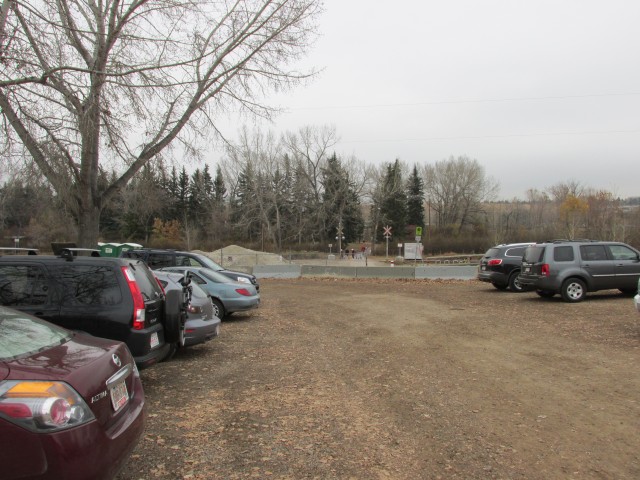
We begin our adventure at Edworthy Park’s south parking lot. Head across the tracks.
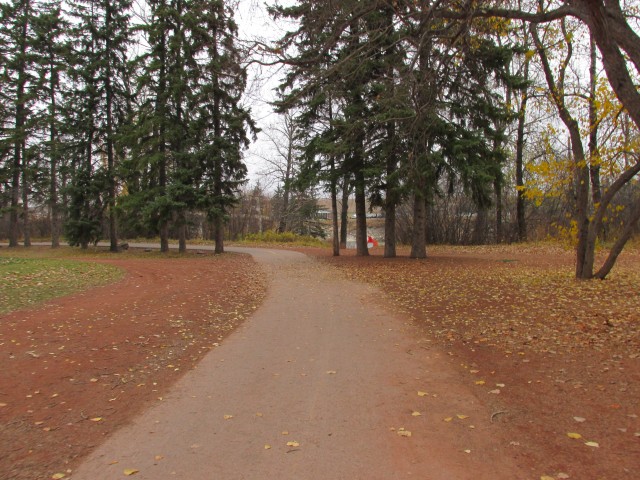
On a paved pathway, follow it as it turns west.
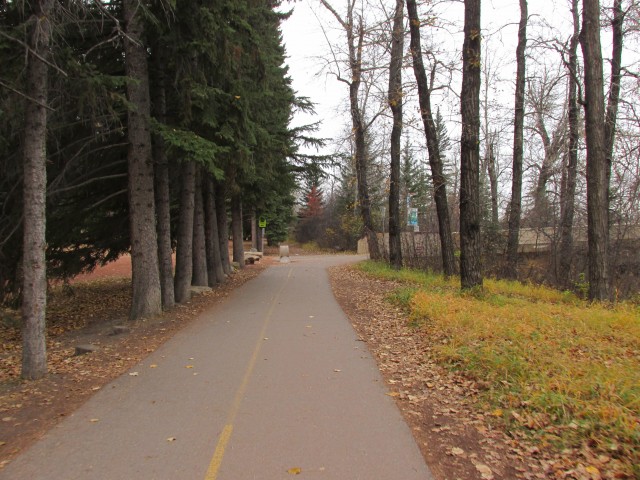
At the bridge – hard to see on the right – stay straight and leave the pavement behind.
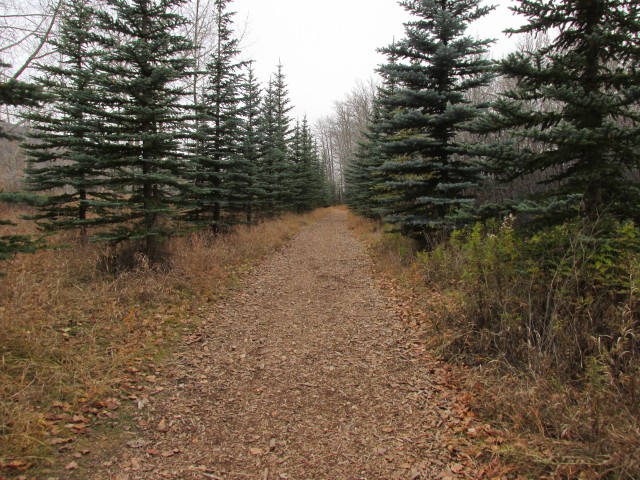
Passing the tree farm – what a horrible grey day.
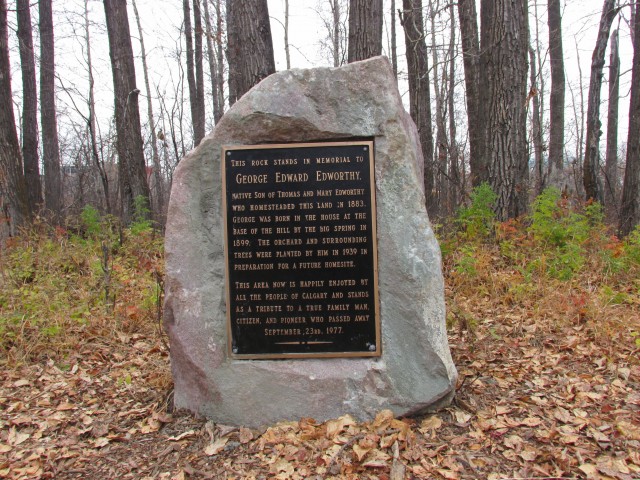
A monument to George Edworthy, who at one time homesteaded on this land.
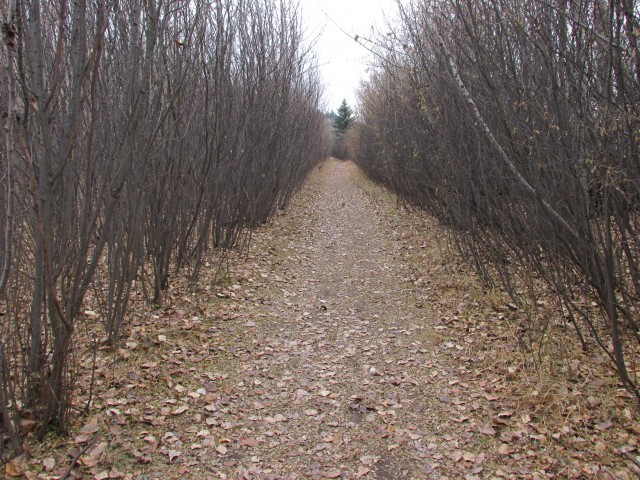
The going is easy and pleasant.
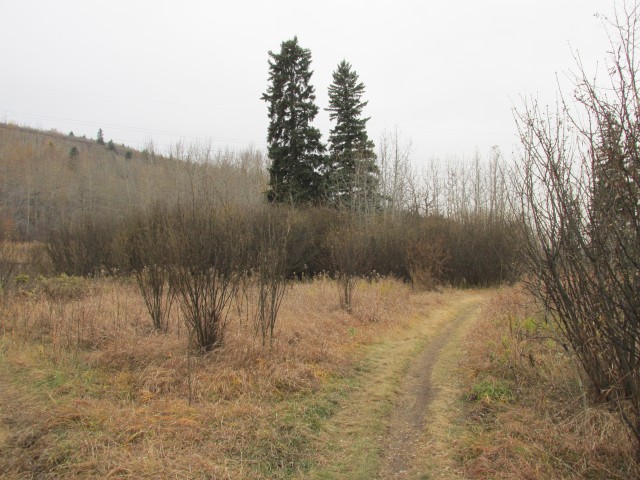
At these two trees, turn left and cross the tracks. But first, explore some building remains at their base.
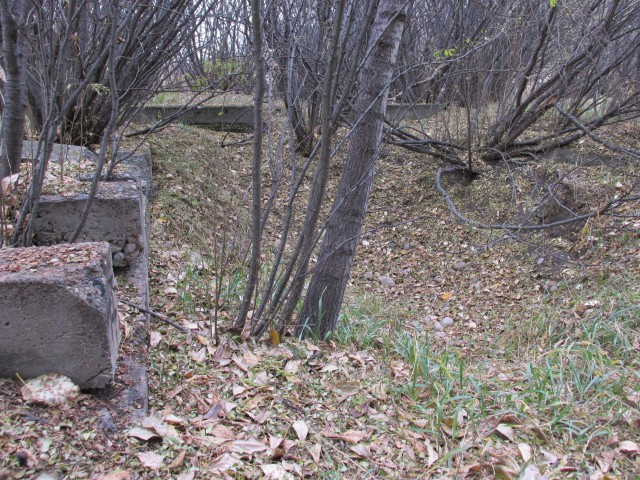
Some old foundations connected to the Brickburn Brick factory.
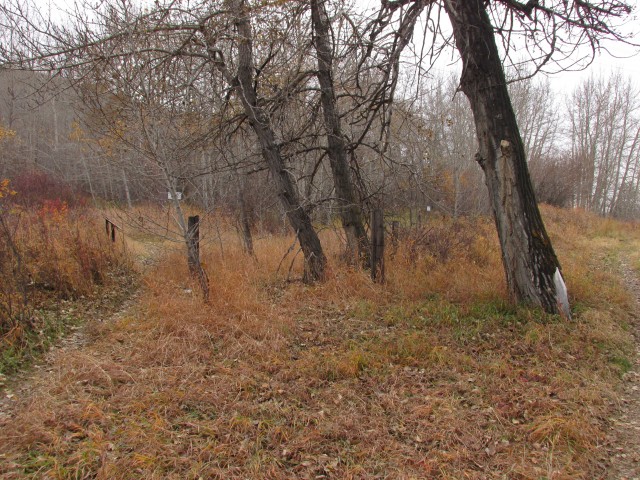
The site of the brick factory which was in production from 1905-1931 – little remains today.
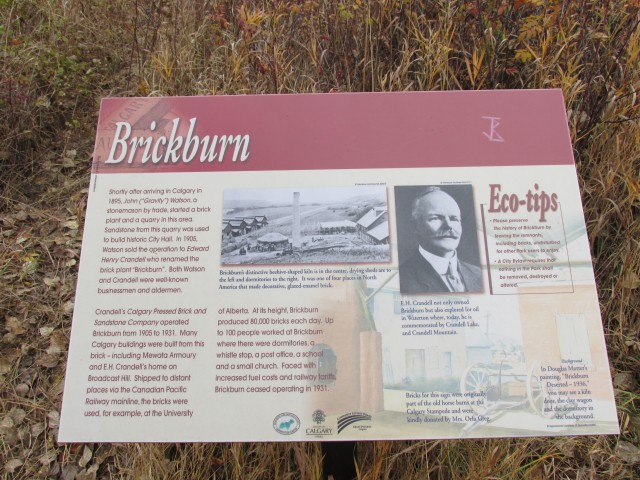
This signs tells us a little about this operation.
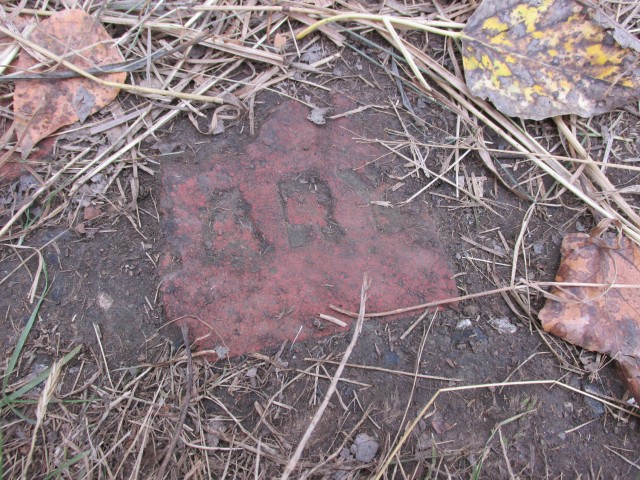
A few broken bricks are scattered about the site.
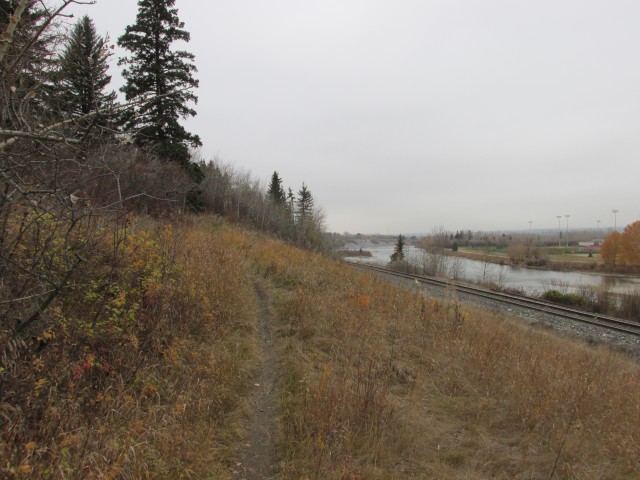
At this junction beside the Bow River and the CPR tracks, take the left branch heading into the trees.
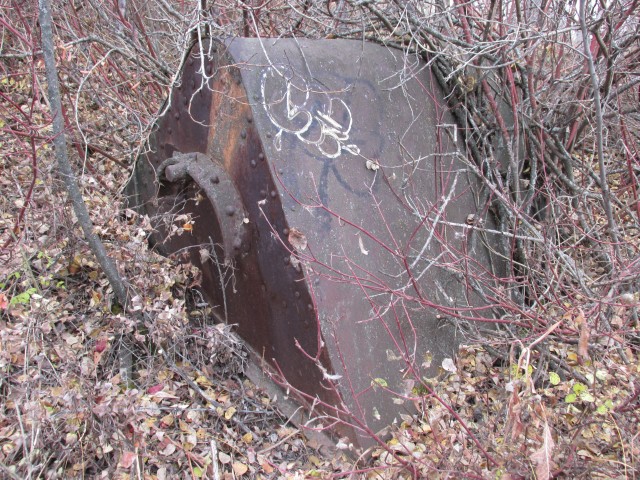
An old tank of some sorts found along the trail.
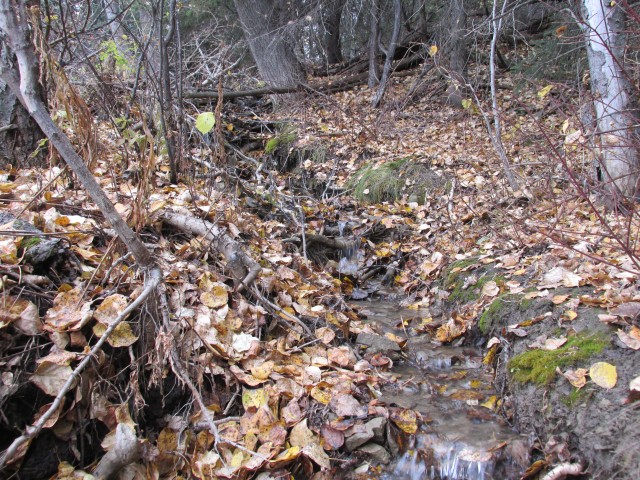
In the Edworthy area, there are many springs and small streams – odd for such an urban area.
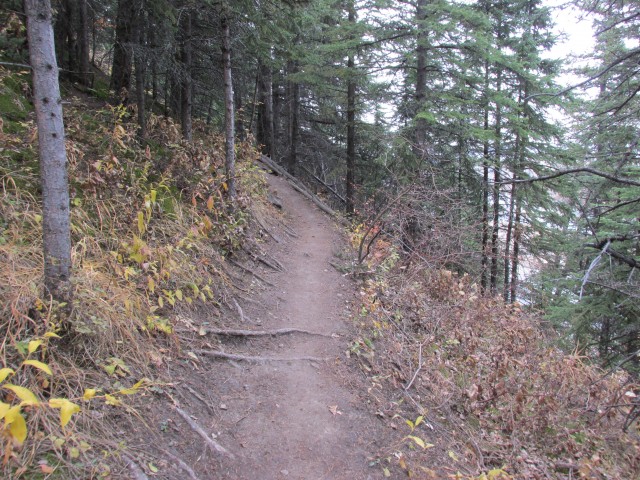
The narrow trail heads up steeply here.
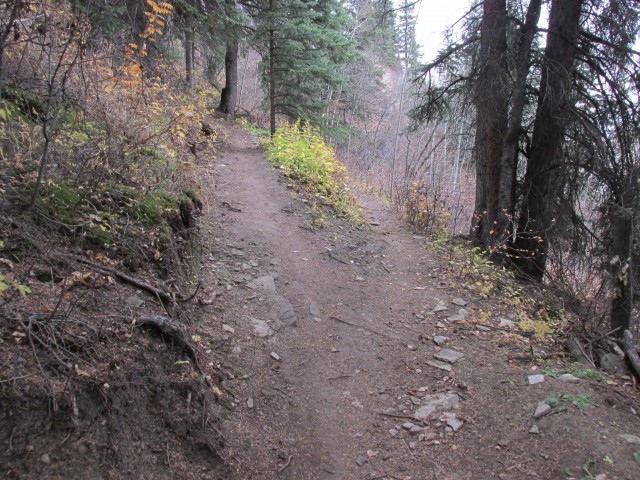
The trail splits before rejoining itself a bit further on.
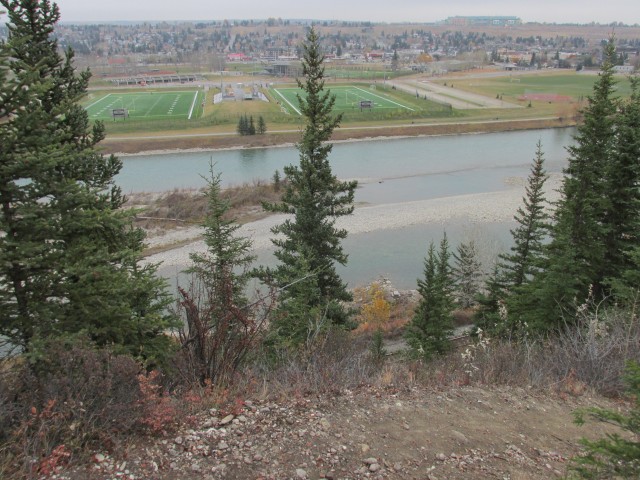
Shouldice Park across the river. This view reminds us we are in the big city.
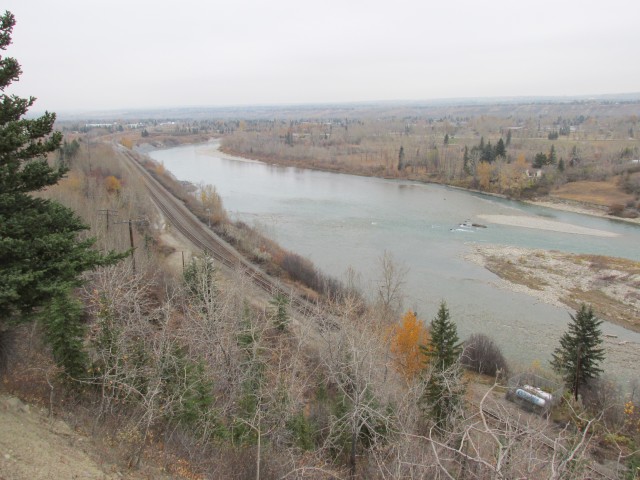
Looking west up the Bow River on an awful dismal day.
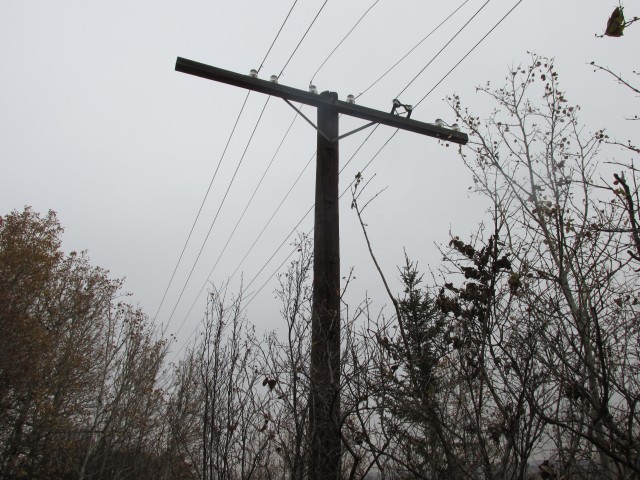
Some old telegraph poles can be found along the western section of the trail.
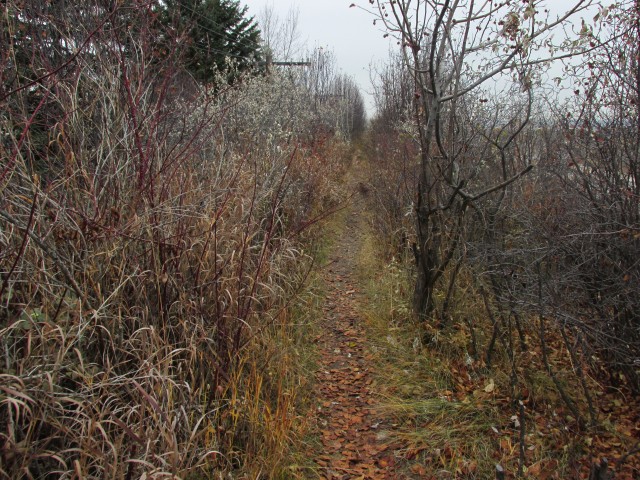
As we travel west, the trail becomes less distinct.
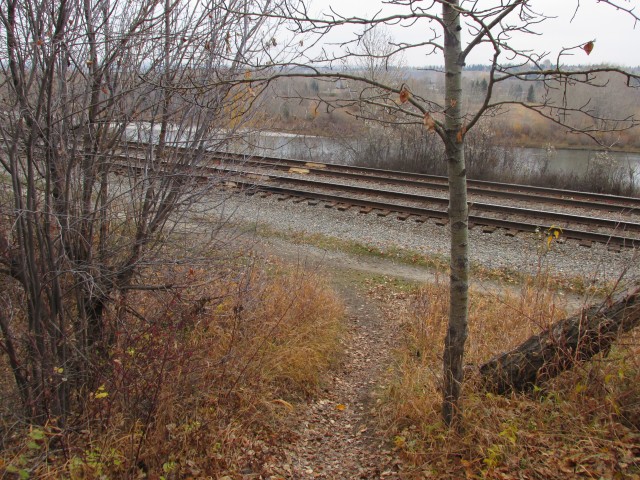
We briefly drop down to the CPR tracks.
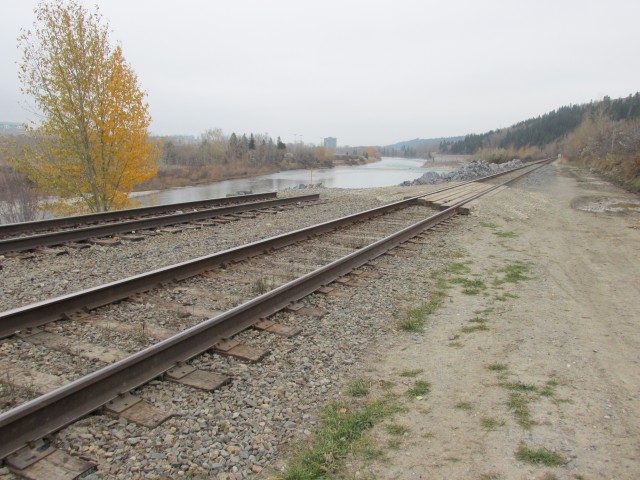
Along here, the railway sustained damage from the spring 2013 floods.
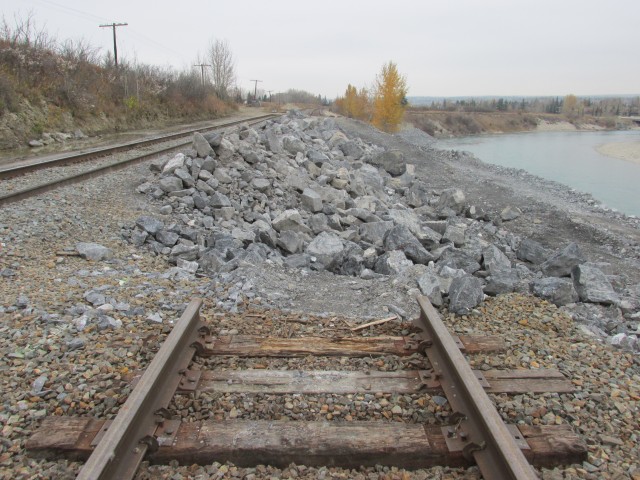
The main track was severed and the undamaged siding is being used as a bypass track.
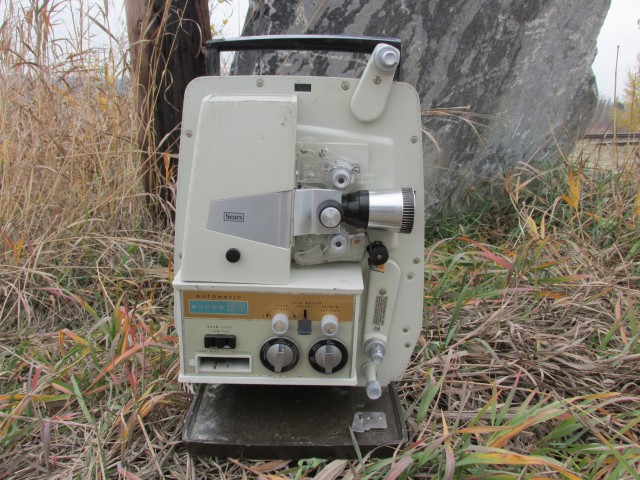
An old 8mm projector found along the tracks. How does this junk get here?
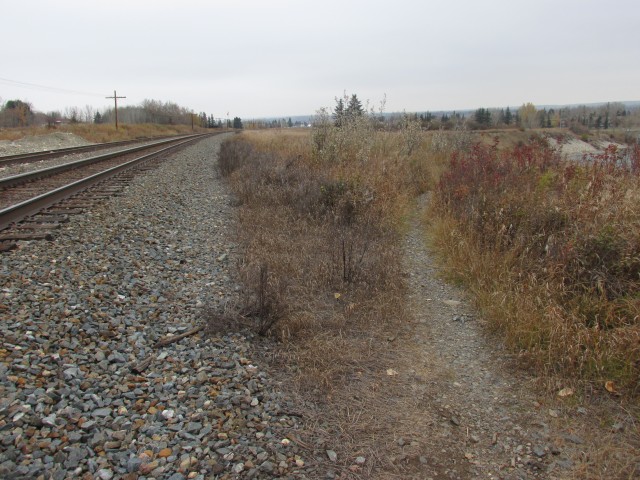
Follow the trail heading off to the right.
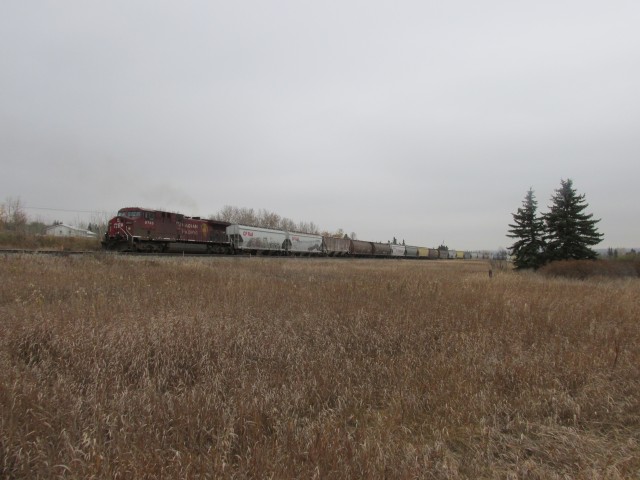
We catch a passing train. It’s believed there was a house or small farm here.
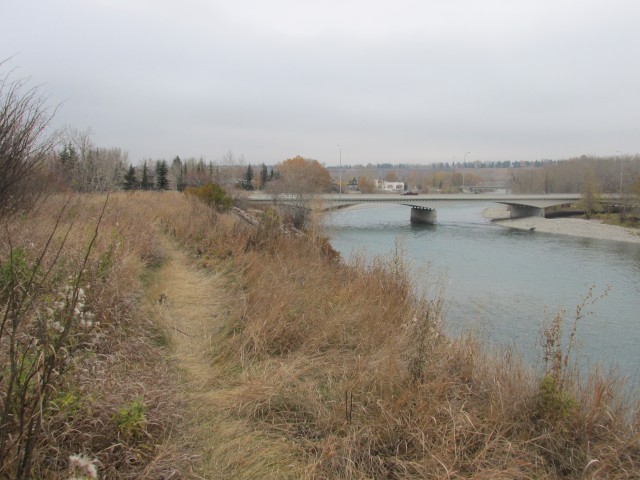
The Trans Canada highway bridge comes into view.
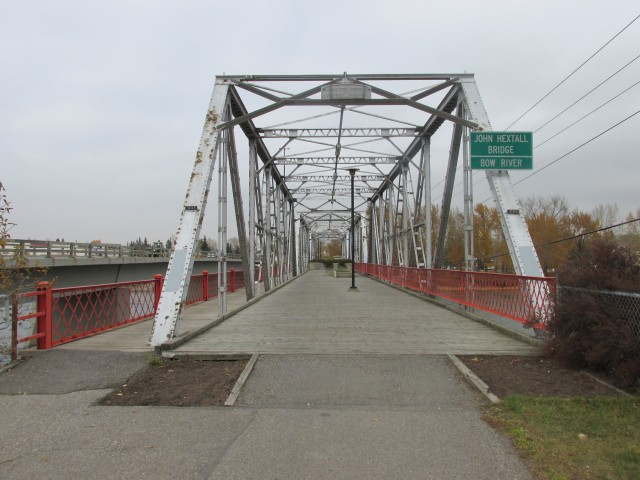
The end of this journey, at the John Hextall Bridge, built in 1910.

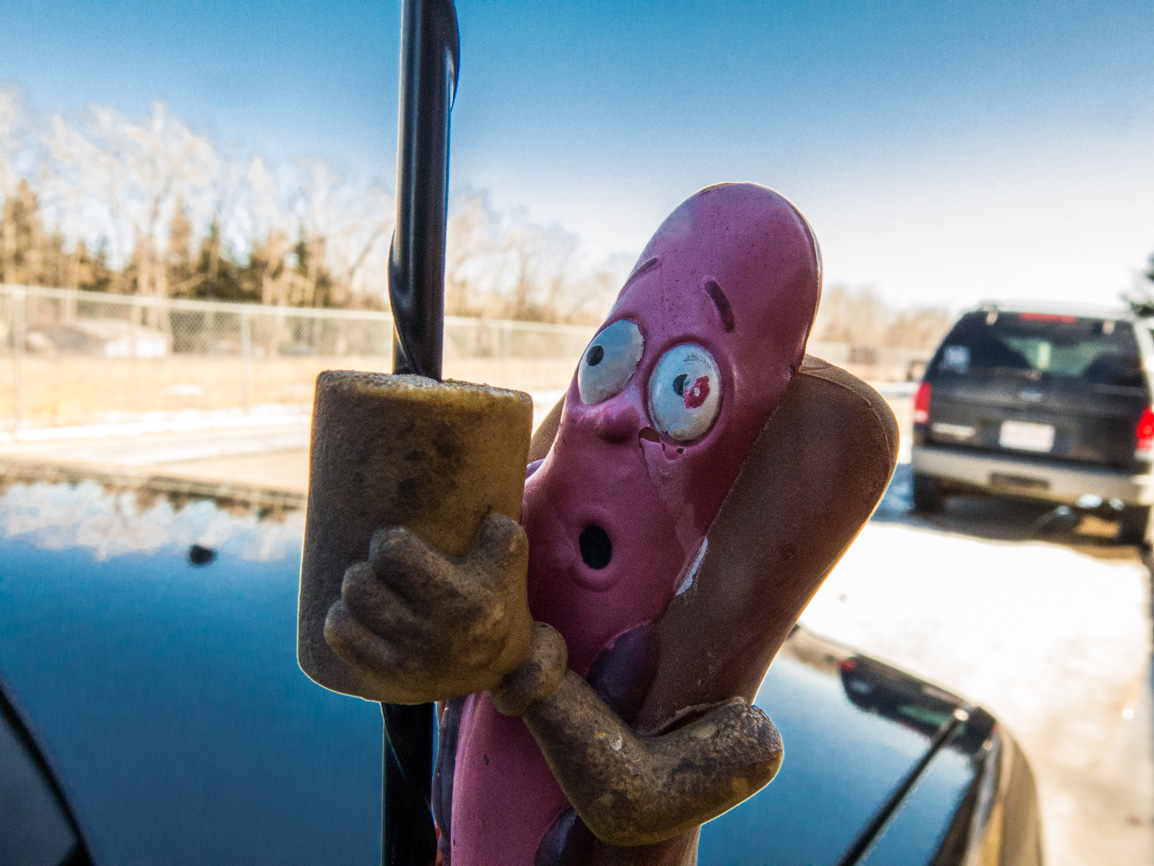
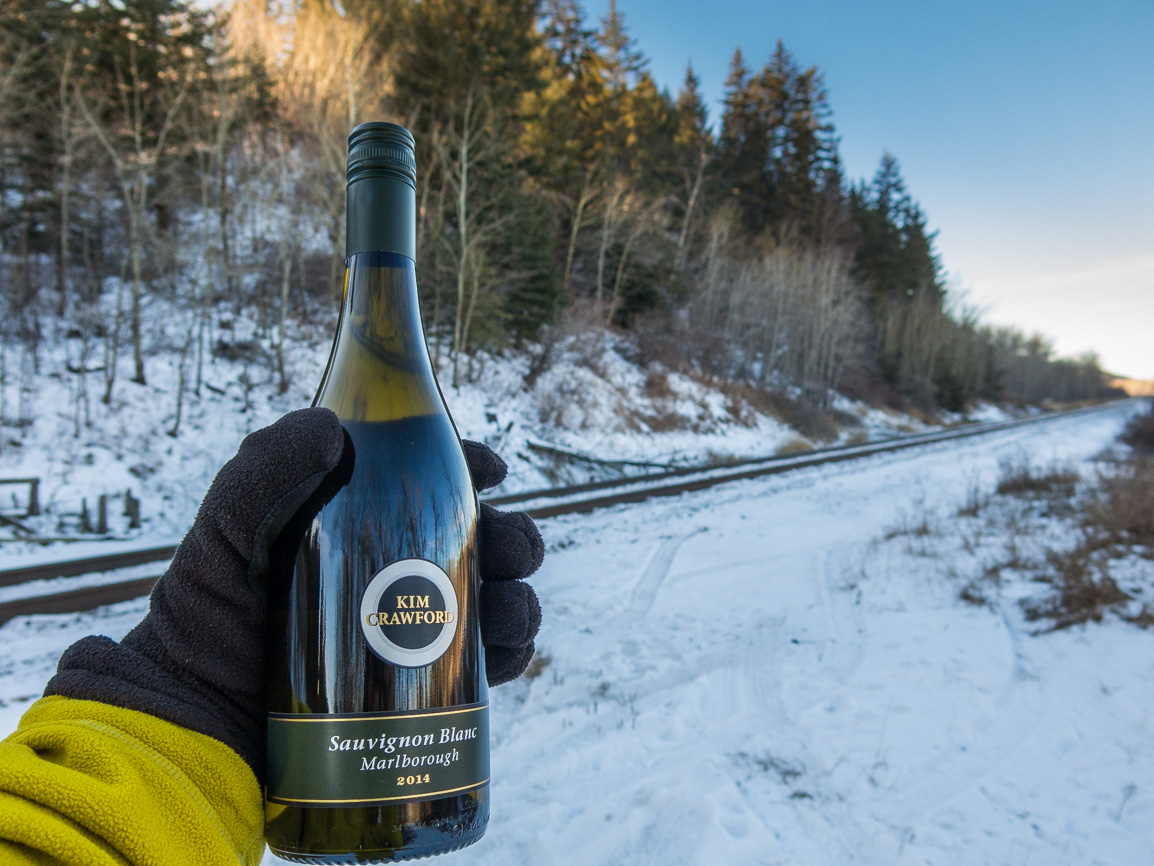
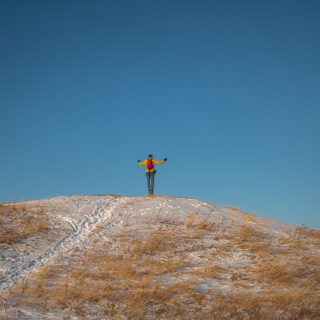
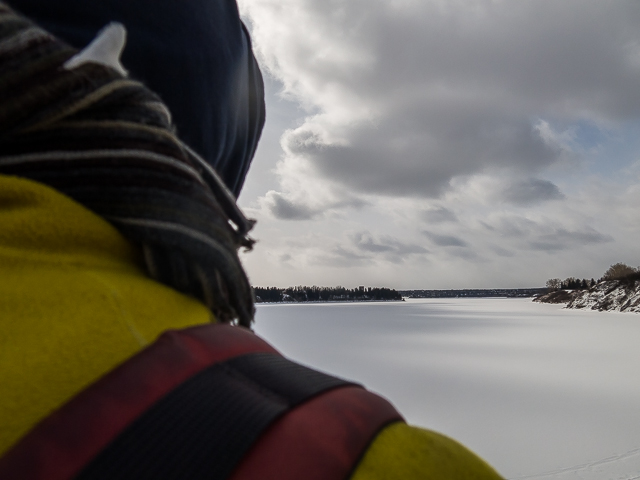
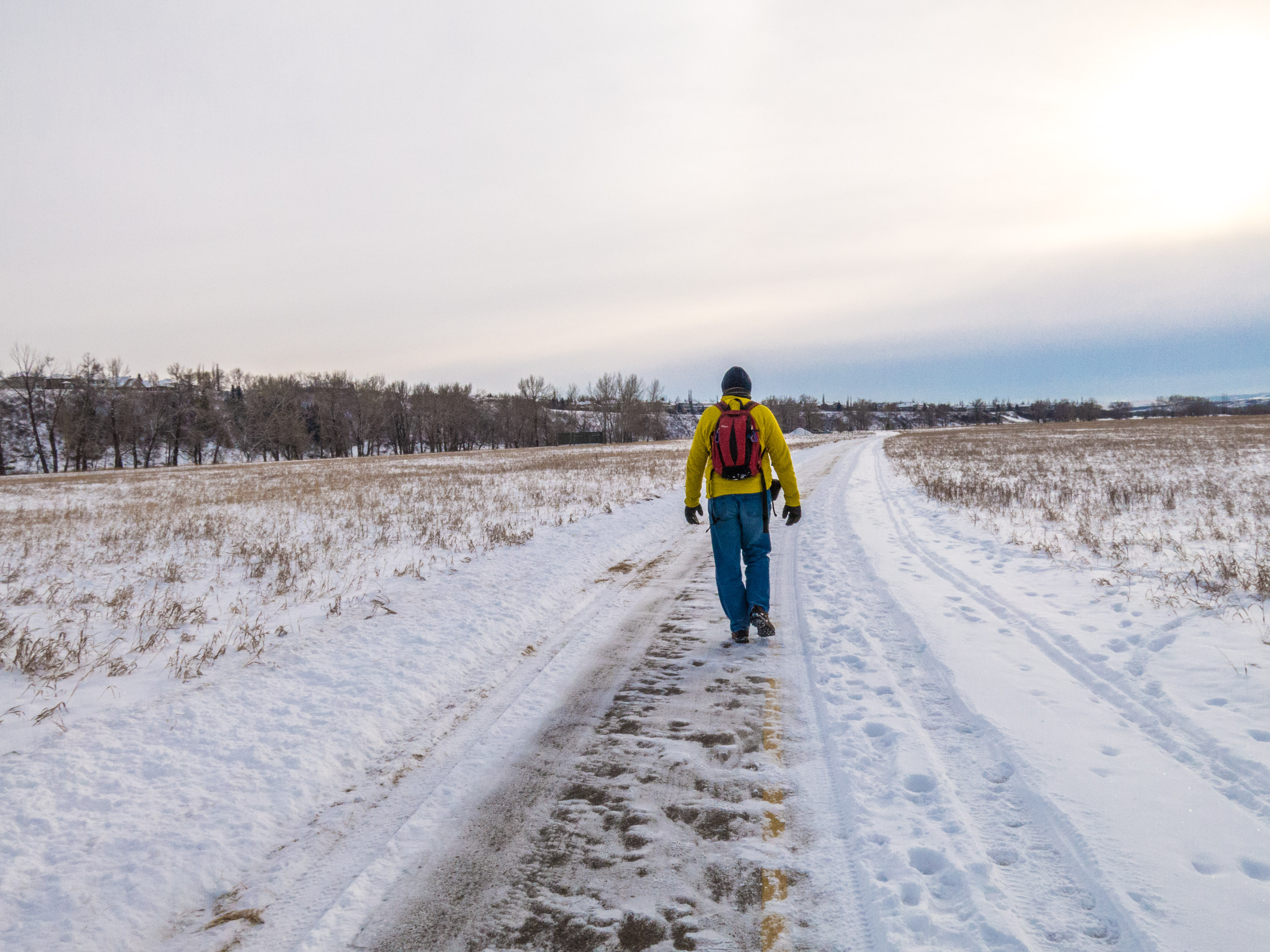
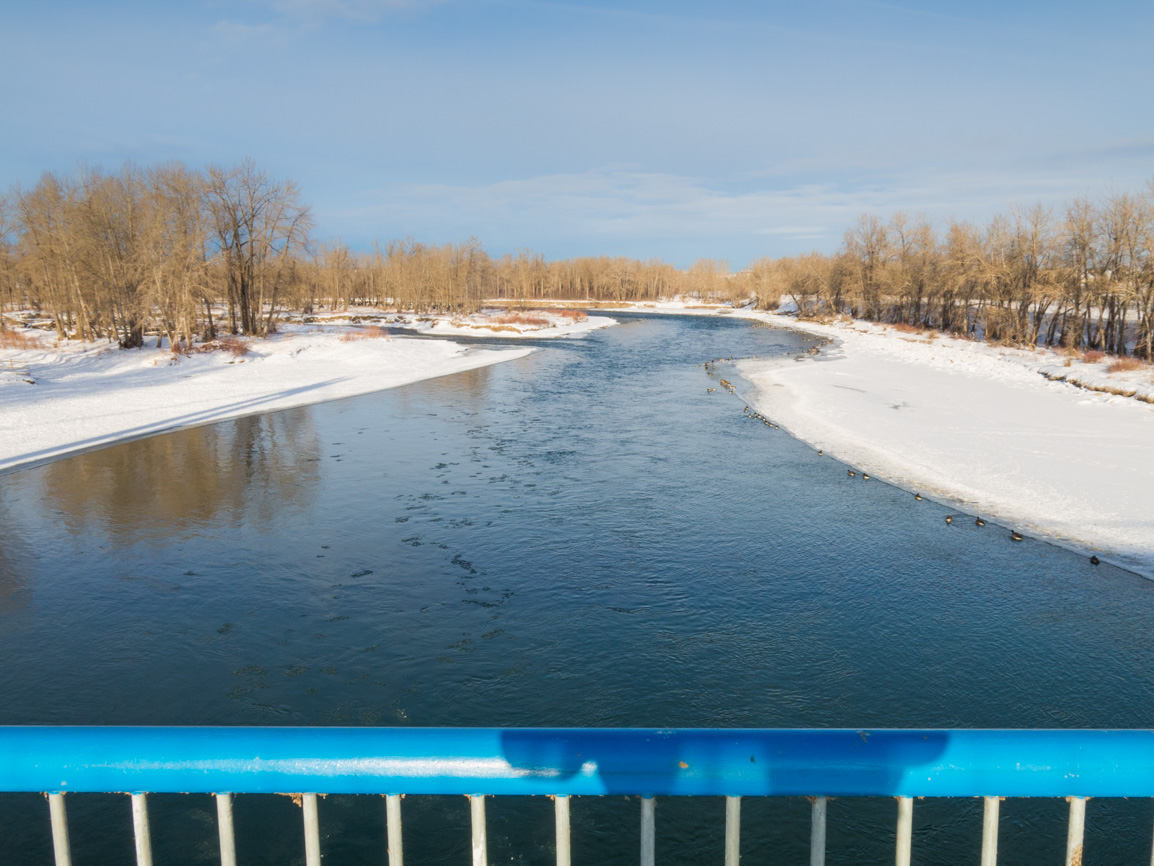
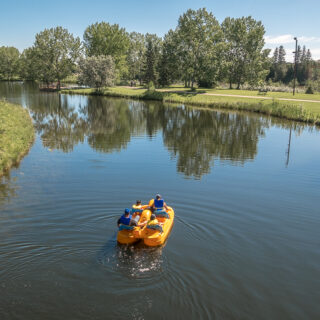
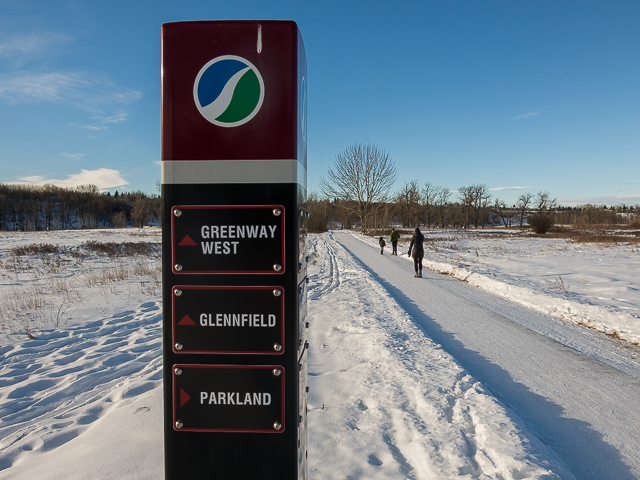
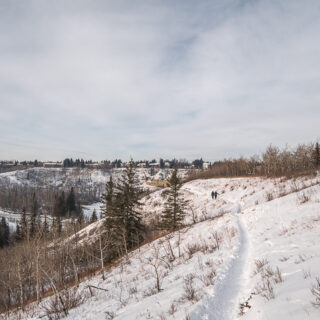
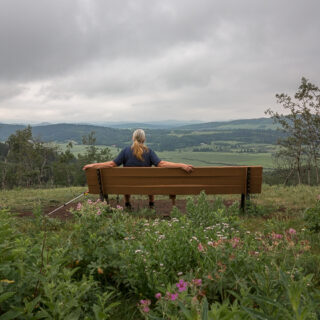
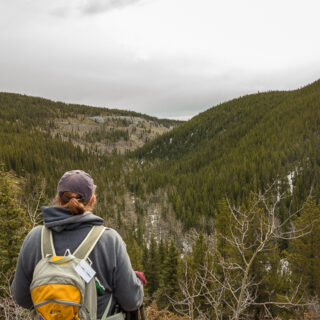
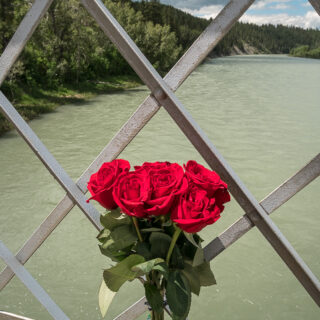
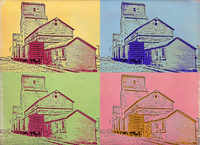






CP Rail now has no trespassing signs at the railway cross point to the remains of the Brickburn site which all that remains are some broken bricks in the path on the South side of the rail line. On the North is the remains of a small cement building. The descriptive Brickburn sign is long gone. I’ve heard of people being fined for trespassing in the area. Not really worth the effort to visit but the walk there from Edworthy Park is pleasant and takes about 10 minutes.
We’re not surprised I guess.
A lot of older posts on this site are outdated and probably should go bye-bye, but that would mean work and we’re lazy!
Brickburn at night. Not a soul around. The dogs led me to a cul-de-sac hidden behind a hill, through a pathway mostly overgrown with bushes and trees. Not an easy place to find, maybe 600 ftsq. I sat on a stone there for several minutes just enjoying the quiet as the dogs sniffed around the area. Then continued west past what appears to be an old metal water wheel embedded in the bottom of the stream. Shhh… this might be my new favorite winter night dog walk!
An amazing time! Sitting in quiet, in the woods, does amazing things for the body and soul. Now what’s this? A waterwheel? Are we on the same trail? I don’t recall anything like this. Might have to revisit the trail.
They had quite a few out – a little ways east of where you started, the water came up over the bank and was lapping at the tracks.
Wow! Thanks for posting.
The power of the river is amazing. If the bank was undercut it was good a train didn’t pass over and fall into the river!
I am not sure how far the river cut into the bank, it’s not clear given all the work that’s been done since, but that’s a good point. Of course, unlike the Bonnybrook Bridge whose damage was below water, track shifting or the bank collapsing here would have been plainly visible (I assume) and spotted by someone before a train passed over. Surely they must have had track and roadbed inspectors out in places were the river encroached on the line.